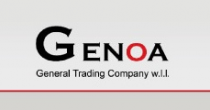Global Epoxy Composite Market Report 2022: A $43.85 Billion Market by 2027 - Industry Trends, Share, Size, Growth, Opportunities and Forecasts - ResearchAndMarkets.com
The "Epoxy Composite Market: Global Industry Trends, Share, Size, Growth, Opportunity and Forecast 2022-2027" report has been added to ResearchAndMarkets.com's offering.
The global epoxy composite market reached a value of US$ 30.02 Billion in 2021. Looking forward, the market is set to reach a value of US$ 43.85 Billion by 2027, exhibiting a CAGR of 6.52% during 2021-2027.
Epoxy composite is a type of material that employs epoxy resin for creating a polymer matrix, which is reinforced with fibers or other fillers to manufacture durable components with high strength-to-weight ratios. Some of the commonly used methods for producing epoxy composites include hand layup, compression, filament winding, and injection resin and resin molding processes.
As compared to conventional construction materials, such as metal and concrete, epoxy composite is more lightweight, flexible, and cost-effective, and exhibits excellent adhesion and superior ultraviolet (UV) radiation, chemical, and heat resistance properties. This, in turn, protects the object from deterioration, due to which it is extensively used in various industrial applications. At present, epoxy composite is mainly available in glass and carbon fiber types.
Epoxy Composite Market Trends:
One of the key factors driving the epoxy composite market is the widespread product adoption in load-bearing applications, including automotive, aerospace, oil and gas, and construction industries, due to their improved mechanical properties, high adhesiveness, heat and solvent resistance, and low costs.
Additionally, epoxy composites exhibit various beneficial properties, such as being lightweight, exhibiting resistance to fatigue, and offering lack of shrinkage after cooling, due to which they are frequently combined with carbon and glass fiber to manufacture wind blades.
As a result, there has been a fueling demand for epoxy composites in the wind energy industry for producing and coating components, which is acting as another growth-inducing factor. In line with this, significant technological advancements and the introduction of several effective and affordable production solutions for manufacturing epoxy composites in bulk are contributing to the market growth.
Other factors, such as strategic collaborations amongst key players and ongoing investments in the research and development (R&D) activities for producing versatile epoxy resin that can be deployed as a key component to construct air and watercraft, are creating a positive outlook for the market.
Key Questions Answered in This Report:
- How has the global epoxy composite market performed so far and how will it perform in the coming years?
- What has been the impact of COVID-19 on the global epoxy composite market?
- What are the key regional markets?
- What is the breakup of the market based on the fiber type?
- What is the breakup of the market based on the manufacturing process?
- What is the breakup of the market based on the end user?
- What are the various stages in the value chain of the industry?
- What are the key driving factors and challenges in the industry?
- What is the structure of the global epoxy composite market and who are the key players?
- What is the degree of competition in the industry?
Competitive Landscape:
The competitive landscape of the industry has also been examined along with the profiles of the key players being
- Arkema S.A
- Avient Corporation
- Axiom Materials Inc.
- Gurit
- Hexcel Corporation
- Huntsman Corporation LLC
- Mitsubishi Chemical Holdings Corporation
- SGL Carbon SE
- Solvay S.A
- Teijin Limited
- Toray Industries Inc.
Key Market Segmentation:
Breakup by Fiber Type:
- Glass Fiber
- Carbon Fiber
- Others
Breakup by Manufacturing Process:
- Lay-up
- Compression Moulding
- Resin Injection
- Resin Transfer Moulding
- Filament Winding
- Pultrusion
Breakup by End User:
- Aerospace and Defense
- Automotive
- Electrical and Electronics
- Wind Energy
- Sporting Goods
- Marine
- Piping
- Others
Breakup by Region:
- North America
- United States
- Canada
- Asia-Pacific
- China
- Japan
- India
- South Korea
- Australia
- Indonesia
- Europe
- Germany
- France
- United Kingdom
- Italy
- Spain
- Russia
- Latin America
- Brazil
- Mexico
- Middle East and Africa
For more information about this report visit https://www.researchandmarkets.com/r/a6tv4y
View source version on businesswire.com: https://www.businesswire.com/news/home/20221202005128/en/


